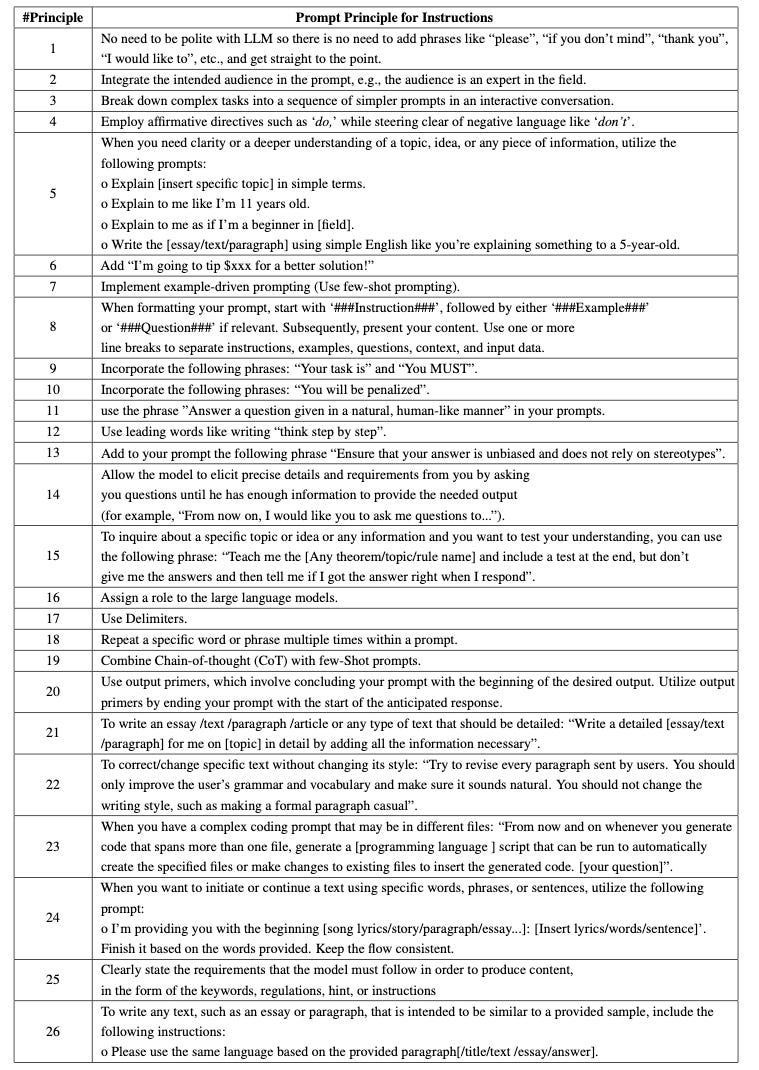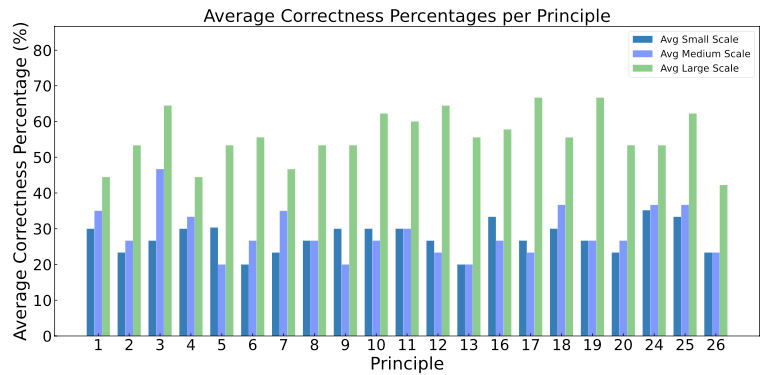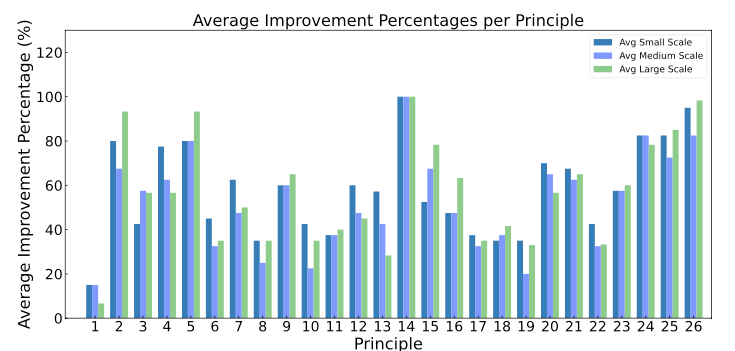The Best ChatGPT Prompt Principles You Need to Follow
Top 10 prompt principles and how to use them in real-world prompts
The other day, I found this paper with interesting findings for anyone who wants to write better prompts.
The researchers created a list of prompt principles and tested them to see how much they improve the quality of large language models (LLMs) responses.
However, if you read the abstract or conclusion, it’s not obvious which principles work and which don’t (spoiler: not all the principles significantly improved LLMs response)
I read the entire paper to find the best prompt principles. In this article, I’ll list the top 10 prompt principles you need to follow, show bad vs good prompts, and explain how I apply the best principles in my own AI workflows (copy-and-paste prompts included)
Note: Access all my up-to-date guides to master AI in this Google Doc
The Prompt Principles (and metrics used to evaluate them)
Here are the 26 prompt principles presented in the paper
Researchers evaluated the principles based on two metrics: boosting and correctness
Boosting: Assesses the enhancement in the quality of responses
Correctness: Assesses the precision of responses (accuracy, relevance, no errors)
To select the best principles from the list, I prioritized boosting over correctness.
Why? In the paper, correctness was related to mathematical accuracy and deductive logic. That’s why principles 12 (use “think step by step“) and 19 (use chain of thought) showed more correctness improvement in LLMs.
Most of us, though, will benefit more from the principles that improve the quality of the response on LLMs, such as principles 2, 5, 15, 16, 25, and 26 (highest green bars below)
The 10 best principles (sorted by response improvement)
You shouldn’t follow all 26 prompt principles!
Principles #25 and #26 improve the response dramatically, but #1 has little to no positive impact on the response (being polite or not to LLMs appears to be irrelevant)
Here are the top 10 principles to follow (treat them as guidance, not strict rules)
Principle #14: Have the model ask clarifying questions
Use the prompt “From now on, I would like you to ask me questions to ...” to allow the model to ask you questions until it has enough information to provide the needed output
Bad prompt:
Create a workout plan for me
Good prompt:
I want to create a personalized workout plan. From now on, I would like you to ask me questions to gather the information you need to provide the best plan
Principle #26: Copy the language and style of a provided example
This is also known as one-shot prompt. Here, we provide the AI model with a single example to guide its output
Bad prompt:
Write another product description for wireless earbuds
Good prompt:
Write a product description for wireless earbuds that is similar to the sample attached.
Please use the same language, tone, and structure as the sample provided. Do not copy phrases
Principle #5: Ask for simple explanations when you need clarity
You should include one of the instructions below in your prompts:
Explain [insert specific topic] in simple terms.
Explain to me like I’m 11 years old.
Explain to me as if I’m a beginner in [field].
Write the [essay/text/paragraph] using simple English like you’re explaining something to a 5-year-old.
Bad prompt:
Explain blockchain
Good prompt:
Explain blockchain to me as if I’m a beginner in technology
Principle #2: Name the intended audience
Bad prompt:
Explain quantum computing
Good prompt:
Explain quantum computing to a high school student with no physics background
Principle #24: Continue text with specific words or sentences
Bad prompt:
Continue this story: John walked into the room
Good prompt:
I’m providing you with the beginning of a story: John walked into the room
Continue it using these words: mysterious, shadow, whisper. Finish based on the words provided, keeping the flow consistent
Principle #15: Test your understanding
This principle is about using this prompt to test your understanding: Teach me the [any theorem/topic/rule name] and include a test at the end, but don’t give me the answers, and then tell me if I got the answer right when I respond
Bad prompt:
Teach me photosynthesis
Good prompt:
Teach me photosynthesis and include a test at the end, but don’t give me the answers. Then tell me if I got the answers right when I respond
Principle #25: State clear requirements
The requirements can be in the form of keywords, regulations, hints, or instructions
Bad prompt:
Write a product review
Good prompt:
Write a product review following these requirements:
Keywords to include: durable, affordable, eco-friendly
Must mention: battery life, build quality
Tone: professional but approachable
Length: 150-200 words
Principle #4: Use affirmative “do“ (avoid negative language)
Bad prompt:
Don’t give me a long explanation
Don’t use technical jargon
Don’t include unnecessary details
Good prompt:
Give me a brief explanation using simple language with only the essential details
Principle #9: Use “Your task is” and “You MUST”
Bad prompt:
Can you summarize this article?
Good prompt:
Your task is to summarize this article in 3 sentences. You MUST include the main conclusion
Principle #16: Assign a role
Bad prompt:
Rewrite my resume
Good prompt:
You are a career coach with 15 years of experience. Help me improve my resume
Principle #3: Break down complex tasks into simpler prompts
Bad prompt:
Create a complete business plan for a coffee shop
Good prompt:
Create a complete business plan for a coffee shop
Step 1: Brainstorm coffee shop ideas
Step 2: Identify target customers and unique angle
Step 3: Research market and competitors
….
If I had to add some good principles to the top 10 based on my experience, I’d add #7 (use few-shot prompting), #12 (add “think step by step”), and #19 (use chain of thought). You can find more about these principles in this guide I wrote.
How to use the top 10 principles in real-world prompts
The bad/good prompt examples I gave you earlier were simplified so you could easily understand each principle.
However, real-world prompts tend to be longer and more complex. They might include multiple principles and, in some cases, break the rules and go against one principle.
Here are some real-world examples of how I use these principles in my prompts (and why I don’t follow some of them)





